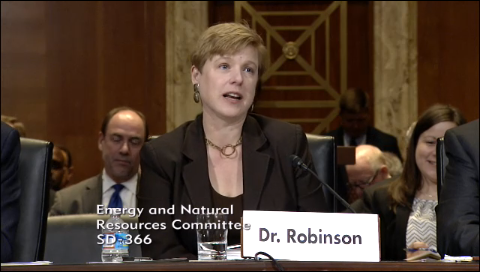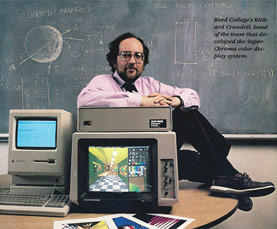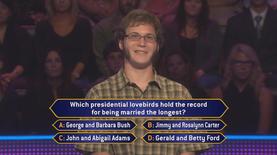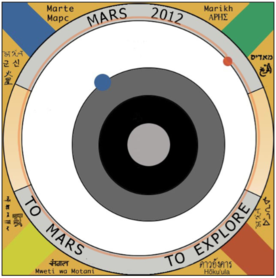
IRIS login | Reed College home Volume 96, No. 2: June 2017
Tags
"physics"
Physics Grad Focuses Energy at Cambridge
Upon hearing there is all sorts of “crazy research happening” at Cambridge from Prof. Joel Franklin ’97 [physics 2005–], Zuben Scott ’16 knew exactly where he wanted to head after graduating from Reed. Thanks to a Sperling Studentship, which is funded by Reed and Cambridge alumnus John Sperling ’48, he'll have the opportunity.
Zuben is now preparing for a year-long Masters of Advanced Study (MASt) in Applied Mathematics and Theoretical Physics. This is Part III of the Mathematical Tripos of Cambridge University, a world-renowned mathematics degree program focused on intense, independent coursework rather than research.
With 100 classes to choose from, Zuben will concentrate on “general relativity, quantum computation, and particle physics,” gradually zeroing in on a field as the year progresses. A lover of all aspects of physics, Zuben hopes that with “so many theoretical physicists crammed into one place” he will have enough exposure to confidently select a focused PhD program by the end.
Continue reading Physics Grad Focuses Energy at Cambridge
Physics Grad Wins Wilson Fellowship
Working in the mailroom during his senior year, physics major Mike Sommer ’16 turned to his coworker and declared "Well, my life just changed forever."
Mike had just read an email with the news he had won the Woodrow Wilson Teaching Fellowship, which helps pay for a master’s degree in return for a three-year commitment to teaching in a high-need public school.
Now, a mere two months after graduation, Mike agrees that his life has definitely changed—“for the better,” he chimes.
Continue reading Physics Grad Wins Wilson Fellowship
Physics Major Invents New Musical Instrument
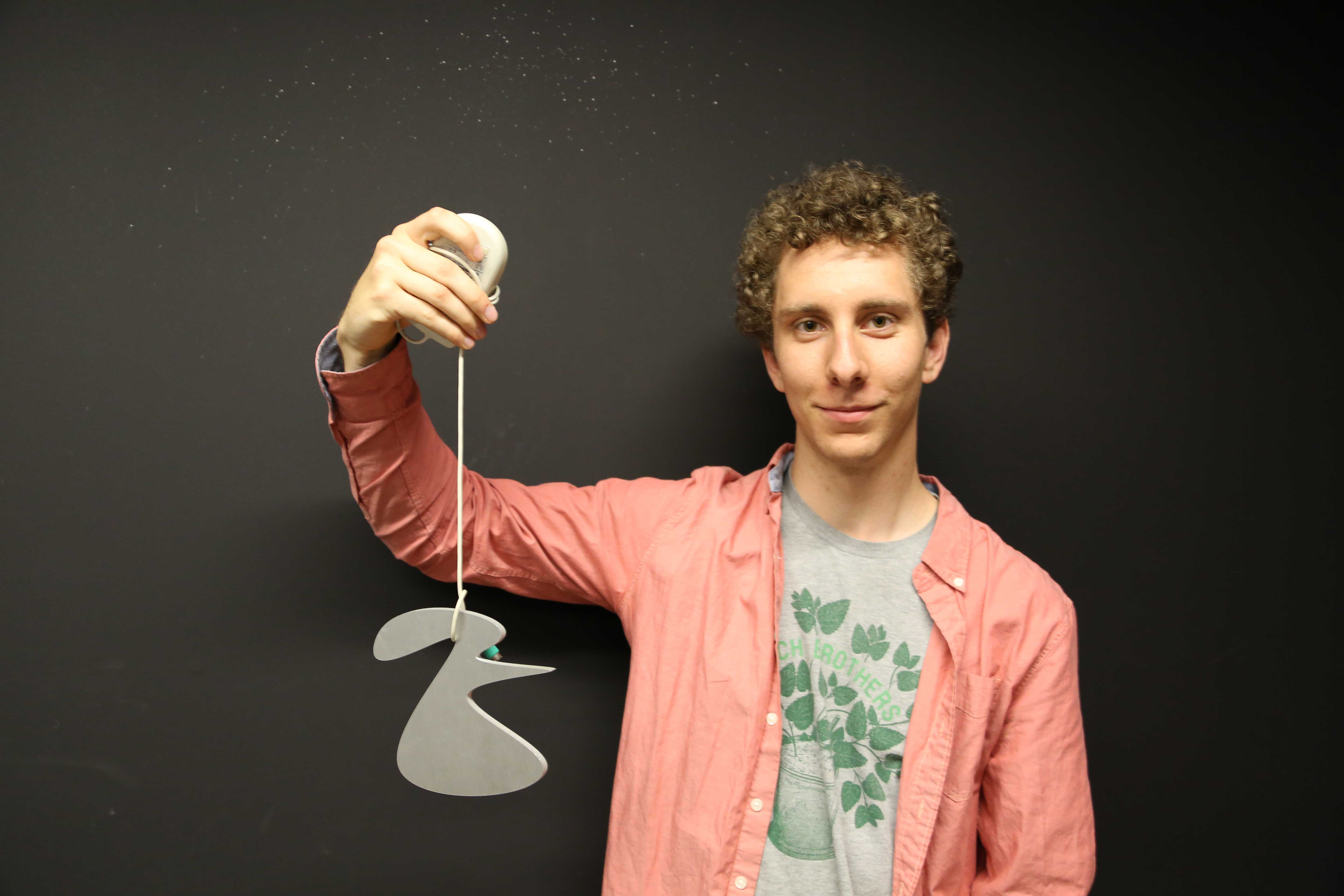
Evan Peairs ’16 invented a musical instrument for his physics thesis by borrowing ideas from aerospace and structural engineering. Photo by Chris Lydgate
Physics major Evan Peairs ’16 has built a new kind of bell for his senior thesis using an innovative design that is capable, in theory, of generating musical tones never previously achieved by a percussive instrument.
The instrument—which is related to a musical family known as the bell plate—consists of a slab of aluminum carved in an otherworldly shape that resembles a mutant unicorn. When you strike it with your finger, however, it rings with the sweet, reverent chime of a church bell.
Using the acoustical wizardry he developed for his thesis, Evan is now designing bell plates that sound like a gong, a xylophone, and a woodblock. “And I’m working on one that sounds like a trumpet,” he adds, showing a visitor around a laboratory in the Physics Building that bristles with lasers, mirrors, wires, pipes, and imposing electronic gadgetry.
Continue reading Physics Major Invents New Musical Instrument
Physics grads prove Einstein was right
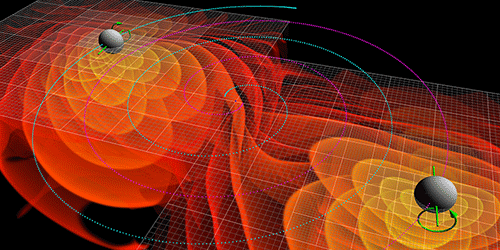
The collision of two black holes at near-light speed sent a gravitational wave pulsing through the fabric of space-time. Physical Review Letters
Long ago, in a galaxy far, far away, two black holes fell into each other's gravitational field and began to spin around each other at insanely high speed, ultimately smashing together in a spectacular collision that sent a pulse of energy rippling through the fabric of space-time.
This cosmic event was detected on September 14, 2015, by the Laser Interferometer Gravitational-Wave Observatory (LIGO)—a massive scientific achievement by thousands of scientists who worked on the project over multiple decades. Physics grads Larry Price ’01, Paul T. Baker ’06, Grant Meadors ’08, and Meg Millhouse ’12 were on the team behind the historic breakthrough, which marked the first time that gravitational waves have been detected and the first time that two black holes were seen to collide. (Until now, in fact, the evidence for the existence of black holes was somewhat theoretical.)
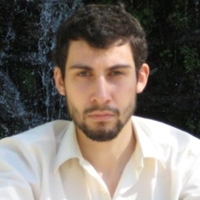
How did it feel to be part of this discovery? "Wonderful!" Grant told us. "How often can one help open a view to a new side of the universe?"
Grant began his work on gravitational wave astronomy at Reed, where Prof. David Griffiths and Prof. Johnny Powell agreed to him take Physics 200 his freshman year. "That fall I saw posters for the National Science Foundation's Research Experiences for Undergraduates," Grant says. "One was at LIGO Hanford. Dick Gustafson, a scientist there, knew of Reed and invited me to come work with him in the summer of 2005. That is how it all began!"
During his time at Reed, Grant ran the nuclear reactor, won a Goldwater Scholarship, and wrote his thesis, Re-searching galactic structure with Reed's radio telescope, with Prof. Bob Reynolds [physics].
After graduation, he studied physics at the University of Michigan and spent two years at the Hanford Observatory as a LIGO fellow, participating in the "quantum squeezer" experiment. After earning his PhD, he joined the Max Planck Institute for Gravitational Physics in Hannover, Germany, to resume his search for gravitational waves.
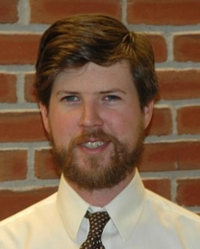
The authors of the groundbreaking paper included several other Reedies:
Paul T. Baker ’06 graduated in physics, writing his thesis on electrodynamics and weak-field Kerr geometry with Prof. Joel Franklin ’97. After Reed, he earned a PhD from Montana State University and is currently a visiting assistant professor at SUNY in Geneseo, NY, where he specializes in gravitational wave data analysis and bayesian statistics.
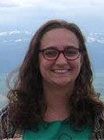
Meg Millhouse ’12 wrote her Reed thesis on neutrino oscillation tomography with Prof. David Latimer. (Her preface begins with a memorable quote from renowned physicist Wolfgang Pauli: “I have done something very bad today by proposing a particle that cannot be detected; it is something no theorist should ever do.") She later published her thesis in the American Journal of Physics. She is currently pursuing a PhD in physics at the Extreme Gravity Institute at Montana State University.
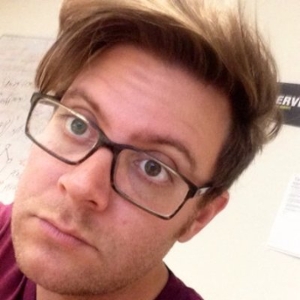
Larry Price ’01 wrote his thesis on Bargmann-Wigner formalism with Prof. Nick Wheeler ’55. After Reed, he earned a PhD from the University of Florida and spent six years working as a postdoc at the LIGO laboratory in Pasadena, where he developed software to optimize astronomical observations and authored well over a scholarly papers on the subject of gravitational waves. He is currently a data scientist at digital advertising firm OpenX.
Continue reading Physics grads prove Einstein was right
Physics major builds a better brick

CUE THE CUBOID. Physics major Aiman Absar ’19 is on a quest to help Bangladesh cope with devastating floods with a cheaper, more sustainable brick.
A Reed physics major hopes to curb the devastation caused by floods in Bangladesh with a new twist on one of humanity’s most durable inventions—the humble brick.
Aiman Absar ’19 and two Bangladeshi friends have created a startup to manufacture a new kind of brick that is both cheap and environmentally sustainable.
With a population of 156 million people packed into an area the size of Iowa, Bangladesh has the highest population density in the world. During the monsoon season, heavy rain combined with poor drainage cause the rivers to flood their banks, inundating the countryside and destroying the makeshift houses of the impoverished rural population. When the waters subside, the farmers and fishermen begin the Sisyphean task of fashioning another abode from sheets of corrugated steel, mud, and thatch.
Continue reading Physics major builds a better brick
Physics Prof Sets Compass for World Championship

Prof. Alison Crocker sprints through the Reed Canyon on her way to Scotland to represent the USA at the World Orienteering Championship. Tom Humphrey
Prof. Alison Crocker [physics 2014–] will represent the United States at the 2015 World Orienteering Championships, held July 31–August 7, in and about Inverness, Scotland.
Prof. Crocker is scheduled to compete in the sprint, the relay, and the long distance courses at the event. She has taken part in international orienteering since 2010, and she attributes her success to the concept of consistency. “Doing both the armchair studying of maps and the hard track or terrain intervals to have the speed. Most of all, it's getting out orienteering as much as possible, to make your brain expend minimal effort while figuring out orienteering puzzles.”
The sport of orienteering combines map reading, running, and not getting lost. Competitors have to find their way between a series of checkpoints, called controls, as quickly as possible and in the right order. Orienteers do not see the map of the course until the race starts, so there can be no advance planning of routes or control locations.
Continue reading Physics Prof Sets Compass for World Championship
Cracking Eggs with Physics Majors
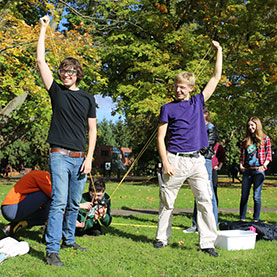
Physics 101 students investigate conservation of energy by catapulting eggs across the Great Lawn. Photo by Tom Humphrey
Making my way to the library the other day I came upon an intriguing sight: a dozen students in Physics 101 firing eggs across the Great Lawn with a makeshift slingshot.
The students were applying the principle of conservation of energy to a devilish problem—determining the minimum angle of trajectory required to be sure that an egg will actually smash when it hits the ground.
At first glance, the experimental apparatus—some sturdy forearms and a length of surgical tubing—seemed rather primitive. But in physics, as elsewhere, appearances are often deceptive. It turns out that only four measurements are required for this investigation. First, the angle at which the egg is fired into the air. Second, the distance between the launch site and the landing site. Third, the mass of the egg. Fourth, the height of the grass. Armed with these numbers, the students can calculate the force with which the egg strikes the dirt.
Continue reading Cracking Eggs with Physics Majors
Reed Runners Demolish Portland Marathon

Philosophy major Ki Choi ’17 ponders time, space, and motion at the 2014 Portland Marathon. Mike Teskey
Approximately 45 students, staff, alumni, parents, and related life-forms ran in the Portland Marathon and Half-Marathon on Sunday in a vivid (and sweaty) demonstration of the versatility of a Reed education.
The first Reed runner to cross the Marathon finish line was physics major Will Holdhusen ’16 who posted a blazing 3:11:10, followed closely by history major John Young ’15 at 3:14:19 and psych major Corinna Jackson ’15 at 3:27:39.
Continue reading Reed Runners Demolish Portland Marathon
Physics Majors Build Musical Staircase
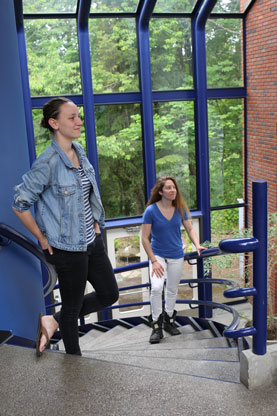
Allie Morgan ’14 and Anya Demko ’14 installed a series of lasers and phototransistors on the spiral staircase in Vollum, turning the steps into a giant, twisting keyboard spanning two octaves on a C major scale. Photo by Tom Humphrey
Pythagoras proposed the harmony of the spheres; Anya Demko ’14 and Allie Morgan ’14 built the harmony of the stairs.
In April, the two physics majors installed a series of lasers and phototransistors on the spiral staircase in Vollum, turning the steps into a giant, twisting keyboard spanning two octaves on a C major scale.
To play the keyboard, you jump from one tread to another. Each time your foot lands on a tread, it interrupts a laser beam, triggering a musical tone. Stepping nimbly down the staircase generates the synthetic jig of an ice cream truck. Charging back up sets off an avalanche of organ tones that sound like JS Bach clearing his throat.
The two seniors spent many hours designing the circuitry, constructing the hardware, and installing the lasers in Vollum. “It was really a great experience,” says Anya. “This was the first time we really got to design our own circuits.”
Continue reading Physics Majors Build Musical Staircase
Ochoa Joins Reed Board of Trustees
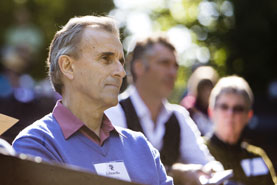
Eduardo Ochoa ’73 presented his reflections on higher education during Reunions 2013. Photo by Leah Nash
His peak intellectual experience was being a student at Reed, which also formed the foundation for everything that followed, says Eduardo Ochoa ’73. So, being asked to help lead his alma mater as a trustee was the ultimate validation, comparable to having a parent say, “You’ve done well.”
Elected to Reed’s board of trustees in October, Eduardo is president of California State University, Monterey Bay, and was the former assistant secretary for postsecondary education in the Obama administration.
A native of Buenos Aires, he attended bilingual schools in Argentina before immigrating with his family to Portland in his sophomore year in high school.
Continue reading Ochoa Joins Reed Board of Trustees
Remembering Prof. Crandall
At yesterday's faculty meeting, Prof. Mary James read a moving tribute to the late Prof. Richard Crandall ’69, written by Prof. Nick Wheeler ’55.
Wheeler, who was Crandall's thesis adviser at Reed during Crandall's student days, and later served alongside him on the physics faculty, calls it an "informal remembrance," but it's so good that we just had to reprint it here . . .
Continue reading Remembering Prof. Crandall
Dispute over Reed’s location brightens Senate hearing
Stalwart correspondent Ed Mills ’80 drew our attention to a lighthearted exchange that took place this week during a hearing before the U.S. Senate Committee on Energy and Natural Resources, chaired by Senator Ron Wyden [D-Oregon]. The committee was meeting to consider several of President Obama’s nominations—including Dr. Beth Robinson ’82 to the post of Under Secretary of Energy.
Committee hearings not exactly famous for their levity. When they aren’t immobilized by partisan wrangling they tend to be--how shall we put it?--less than riveting. Approximately two and a half hours into the hearing, however, the session was enlivened by a surprising geographic issue:
Dr. Robinson to Senator Cantwell [D-Washington]: "Yes, the issues at Hanford are very complex and very important, and as you mentioned, I grew up in Seattle, which is--"
Continue reading Dispute over Reed’s location brightens Senate hearing
Time-Travel Expert to Give Talk Yesterday
Renowned physicist Dr. Kip Thorne will give a lecture at Reed on “The Warped Side of Our Universe: From the Big Bang to Black Holes and Gravitational Waves” on Tuesday, August 27, 2013—which may be tomorrow, today, or yesterday, depending on your frame of reference.
Dr. Thorne, a retired professor of theoretical physics at California Institute of Technology, is one of the world’s leading experts on gravitational waves, black holes, and wormholes—hypothetical “shortcuts” in the space-time continuum that give rise to the theoretical possibility of time travel.
Dr. Thorne is on campus to receive the 2013 Howard Vollum Award for Distinguished Accomplishment in Science and Technology. The award was created as a tribute to the late Howard Vollum ’36, a Reed trustee, and a lifelong friend of the college.
Continue reading Time-Travel Expert to Give Talk Yesterday
How a Galaxy Evolves
Humankind’s view of the cosmos, however magnificent, is fundamentally static. Astrophysicists know that distant astronomical objects (stars, nebulae, galaxies) are in constant motion, but this is invisible to human eyes because it takes place on a timescale which is unimaginably vast. In fact, except for the moon, the planets, and the occasional comet, the night sky has looked essentially the same for the entire history of human civilization.
Recently astrophysicists have used computers to speed things up. For my thesis with Johnny Powell [physics 1987–], I wrote a computer program to simulate the evolution of a typical spiral galaxy. The central premise is that by calculating the gravitational forces acting on a relatively small number of stars, we can simulate the evolution of a real galaxy, which consists of hundreds of billions of stars.
Continue reading How a Galaxy Evolves
A Richard Crandall '69 Remembrance by Sam Danon
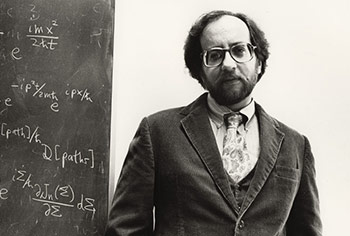
I heard that Richard is gone. I'm very saddened by the news. I already knew him, though not in the classroom, when he was an undergraduate, and then afterwards as a colleague. In those early years, when faculty and students from different and nominally unrelated disciplines were less insular, Gail Kelly, Richard and I sometimes had dinner together at Gail’s house, on Glenwood Street; I’d bring the oysters, Richard the wine, and Gail did the rest. It was great fun, and, with Gail present, the conversation was always animated. --- Once in a while I’d attend his “wild” parties; the liquor flowed, but the music was too loud for me, so I would not stay too long. --- Richard would often ask me to translate something for him from French, or give him the etymology of a word, or locate a quotation by a French author he had come across; the last such quote he asked me to identify was a short paragraph from Camus’ “The Myth of Sisyphus.” I never found out what he needed it for. --- When he had discovered another prime number, he was so excited that he stopped me on campus to tell me about it; he knew that the import of his discovery was lost on me, except of course for it’s being a discovery. --- Once, in the 1980s, after reading an article on deconstruction and quantum theory, I stopped by his office with my simpleminded questions. That’s when he named me something like “Distinguished Quantum Professor of Henry Street.” --- Over lunch one day, it became clear that we were both given to hypochondria; he subsequently would greet me in the street with, "Hi Sam, are we enjoying bad health?" --- I hadn’t heard from Richard for the past two to three years or so, but I knew he was around, building something complicated or writing a book or urging and guiding students and colleagues in the right direction. I'll miss him.
---Samuel Danon [French, 1962–2000]
Professor Emeritus
Continue reading A Richard Crandall '69 Remembrance by Sam Danon
Crandall Memorial Jan. 26
Please join us for a memorial to honor the late Richard Crandall ’69 [physics 1978–2012], on Saturday, January 26, at 2 p.m., in the Eliot Hall chapel.
Following the memorial, there will be a reception in the Gray lounge in Kaul Auditorium. The event is informal and open to the public.
Continue reading Crandall Memorial Jan. 26
Prof. Richard Crandall dead at 64
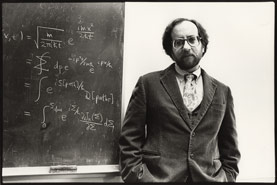
The polymath at work. Professor Richard Crandall ’69 [physics 1978–2012] knew how to cut through a tangle of equations to the root of the problem.
The Reed community was stunned today to learn that physicist, mathematician, computer scientist, and inventor Richard E. Crandall ’69 [physics 1978–] died this morning at Oregon Health and Science University Hospital.
The cause was not immediately clear, but Professor Crandall was recently diagnosed with acute myeloid leukemia.
It is impossible to catalogue Crandall’s myriad intellectual achievements on such short notice. He was a physics professor of great renown at Reed and beyond, skilled at constructing fundamental experiments on a shoestring budget (one of his favorite tricks involved demonstrating the Doppler shift in visible light using a couple of old stereo speakers).
Continue reading Prof. Richard Crandall dead at 64
Reedie Wants To Be a Millionaire
Almost any Reedie would tell you that they did not embark on the life of the mind for its monetary potential. Yet few would turn down the opportunity to earn some quick cash by flexing their mental muscle. On this week's episode of Who Wants to be a Millionaire, Daniel Herman '15 did just that.
Daniel was well prepared for the show: having been on academic quiz teams in high school, and currently working towards a degree in math and physics he breezed through the first few questions. The question of which presidential couple had been married longest made him pause (answer: George and Barbara Bush), but he deployed a lifeline and continued on unabated. By the end of round one Daniel had $68,000 in the bank, and one lifeline left.
Continue reading Reedie Wants To Be a Millionaire
Reedie Designs Sundial for Mars Rover
On a clear Southern California night, Tyler Nordgren '91 stepped outside to take a last look at Mars through his home telescope before stepping inside to watch the landing of the Curiosity rover on NASA TV.
By this time, Curiosity was already slamming into the Martian atmosphere at more than 13,000 miles per hour. After four minutes of aerobraking, the largest supersonic parachute ever deployed off the planet Earth slowed the rover to 220 miles per hour. Then the lander cut away from the chute, firing retro-rockets and searching for a good landing spot. Twenty-five feet above the Martian surface, the lander lowered the rover to the ground and fired explosives that cut the tethers that held them together.
Continue reading Reedie Designs Sundial for Mars Rover
A Five-Octave Finale
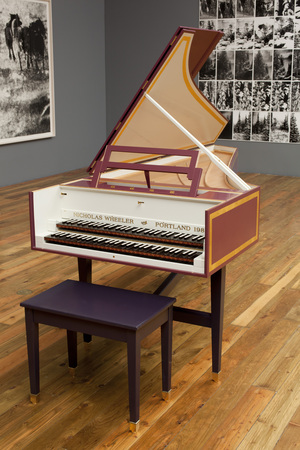 The Douglas F. Cooley Memorial Art Gallery was packed to the rafters last week as alumni from many eras came together in a hush of anticipation to witness a unique occasion--the unveiling of the French double harpsichord created by professor Nicholas Wheeler '55 [physics 1963-2010] over a span of 26 years, and showcased during Reunions '12: Reedfayre.
The Douglas F. Cooley Memorial Art Gallery was packed to the rafters last week as alumni from many eras came together in a hush of anticipation to witness a unique occasion--the unveiling of the French double harpsichord created by professor Nicholas Wheeler '55 [physics 1963-2010] over a span of 26 years, and showcased during Reunions '12: Reedfayre.
Nick became fascinated by the harpsichord (the distinguished ancestor of the piano) while playing at a concert his freshman year at Reed and resolved to build his own some day. He finally began work many years later, in August 1985, when he was A.A Knowlton Professor of Physics. While the bulk of the carpentry and metalwork were completed in the two years that followed, the venture languished for two decades when his teaching and other things took greater precedence. Nick was not able to put finishing touches on the instrument until after his retirement in 2010, after 47 years of service.
"This is a Reed instrument and its first public appearance. It's something I've fantasized about for 60 years," Nick remarked. Returning students and friends continued to ask over the years when and if the project would ever be finished. "It is a doubt which I confess, I sometimes shared: it gave me anxiety because I did not want to leave to my heirs the problem of figuring out how to dispose of a stringless box that looked like a harpsichord, but was unplayable." However friends, such as professor Kathleen Worley, [theatre 1985-] helped along the way by picking up some gold-dipped hardware and wood scrapers.
Continue reading A Five-Octave Finale




